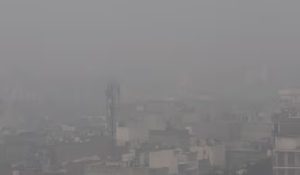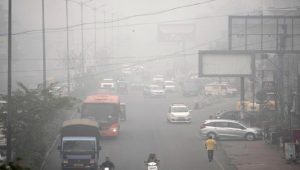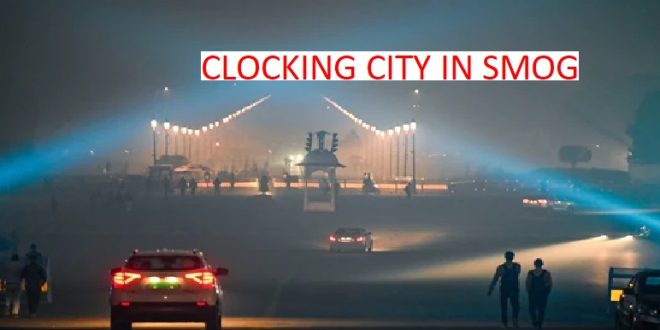20-11-2024
Bureau Report
NEW DELHI: Pollution levels in India’s capital, Delhi, have soared to their highest levels this year, forcing schools and offices to close and cloaking the city in thick brown smog.
In some parts of the city, a live air quality ranking by IQAir put pollution levels at more than 30 times the maximum level deemed healthy.
 India’s pollution control authority said its own reading of Delhi’s 24-hour air quality index (AQI) was 484, classified as “severe plus”, the highest so far this year. India’s Central Pollution Control Board defines an AQI reading of 0-50 as “good”.
India’s pollution control authority said its own reading of Delhi’s 24-hour air quality index (AQI) was 484, classified as “severe plus”, the highest so far this year. India’s Central Pollution Control Board defines an AQI reading of 0-50 as “good”.
The catastrophic levels of pollution led to numerous emergency measures, including most schools being closed and lessons moved online. All non-essential construction was stopped and heavy vehicles were prevented from entering the city.
The pollution has become an annual blight on the lives of the more than 30 million people who live in Delhi and surrounding areas. Experts say the toxic air quality is reducing life expectancy in the city by an average of seven years.
The smog arrives annually as the weather in the north of India gets colder, trapping toxic pollutants from the tens of millions of cars on the road, as well as from rubbish fires, construction and factory emissions.
The problem is further compounded by stubble fires, when farmers burn their field after harvesting rice to clear them for new crops. The practice is illegal in India and comes with a heavy fine, but according to Safar, a weather forecasting agency under the ministry of earth sciences, these fires have contributed as much as 40% of the pollution suffocating Delhi in recent days. On Sunday, satellites detected 1,334 such events in six Indian states.
Last month India’s Supreme Court ruled that clean air was a fundamental human right and ordered the central government and state-level authorities to take action. However, most measures have proved ineffective in stopping air quality deteriorating to levels highly dangerous to health.
 In a city already riddled with inequality, pollution and access to clean air has become one of the great dividing lines between rich and poor. Many in the city are laborers who work outside for long hours during the day and return at night to homes open to the elements, with no air purifiers or protection from pollutants.
In a city already riddled with inequality, pollution and access to clean air has become one of the great dividing lines between rich and poor. Many in the city are laborers who work outside for long hours during the day and return at night to homes open to the elements, with no air purifiers or protection from pollutants.
Shagun Devi, 34, lives in a small shanty with her husband and two daughters in a crammed neighborhood of Delhi’s Okhla neighborhood. “The air in my home is equally polluted as on a road,” she said. “Every year we face these difficult days of pollution and we just have to bear with it. I think it has become a part of our lives.”
Devi works as a domestic help and her husband is a construction worker. She leaves her house at 7am every day and walks 3km to work. Devi said everyone in her family had been sick for the past two weeks since the pollution had worsened and they had no place to seek out clean air, while an air purifier was far beyond their means.
She said: “By the time I reach my workplace, I am already exhausted due to the pollution. I feel short of breath and there is a burning sensation in my eyes and nose. The house I work in has an air purifier. I wanted to buy one for my children. But it costs three months of my earnings.”
For five decades, Sheikh Imamuddin, 70, has made his living selling books on a roadside stall in south-east Delhi. He fears that due to Delhi’s air quality, the job is killing him. He suffers from asthma and struggled repeatedly to speak in the toxic outdoor air, taking long puffs from his inhaler. In the past two weeks he has been to hospital three times.
 Pressmediaofindia
Pressmediaofindia




